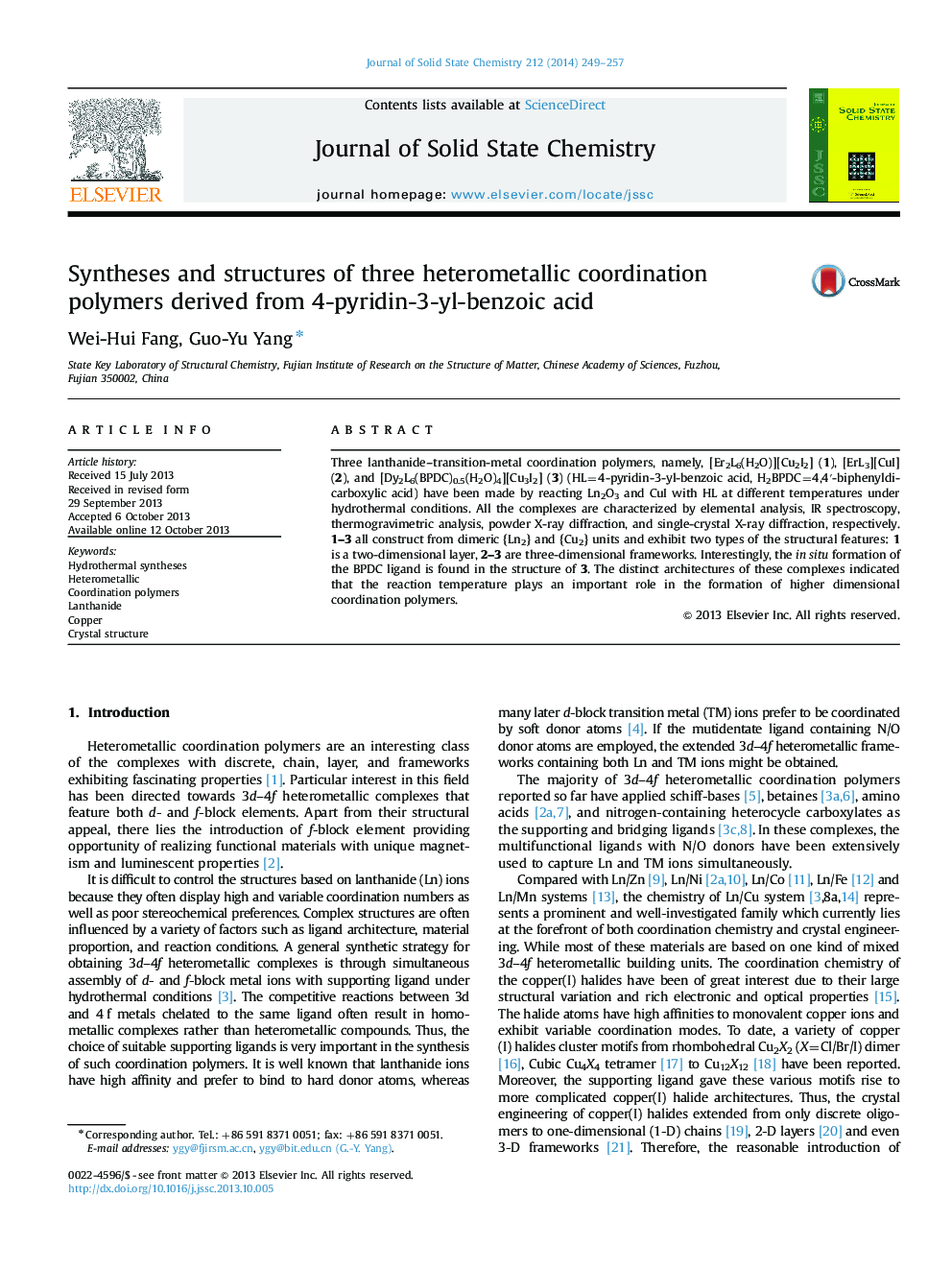| Article ID | Journal | Published Year | Pages | File Type |
|---|---|---|---|---|
| 1329884 | Journal of Solid State Chemistry | 2014 | 9 Pages |
•Three novel heterometallic coordination polymers derived from 4-pyridin-3-yl-benzoic acid have been hydrothermally synthesized.•Mixed dinuclear motifs of {Ln2} and {Cu2} serve as secondary building units to generate 2-D layer and 3-D frameworks.•It is proved that higher temperature is apt to permit construction of high dimensional architectures.
Three lanthanide–transition-metal coordination polymers, namely, [Er2L6(H2O)][Cu2I2] (1), [ErL3][CuI] (2), and [Dy2L6(BPDC)0.5(H2O)4][Cu3I2] (3) (HL=4-pyridin-3-yl-benzoic acid, H2BPDC=4,4′-biphenyldicarboxylic acid) have been made by reacting Ln2O3 and CuI with HL at different temperatures under hydrothermal conditions. All the complexes are characterized by elemental analysis, IR spectroscopy, thermogravimetric analysis, powder X-ray diffraction, and single-crystal X-ray diffraction, respectively. 1–3 all construct from dimeric {Ln2} and {Cu2} units and exhibit two types of the structural features: 1 is a two-dimensional layer, 2–3 are three-dimensional frameworks. Interestingly, the in situ formation of the BPDC ligand is found in the structure of 3. The distinct architectures of these complexes indicated that the reaction temperature plays an important role in the formation of higher dimensional coordination polymers.
Graphical abstractBy hydrothermal reaction of lanthanide oxide, copper halide, and 4-pyridin-3-yl-benzoic ligand at different temperatures, a series of 1-D to 3-D 3d–4f coordination polymers, namely [ErL3(H2O)2][CuI], [Er2L6(H2O)][Cu2I2], [ErL3][CuI], and [Dy2L6(BPDC)0.5(H2O)4][Cu3I2], have been made, respectively.Figure optionsDownload full-size imageDownload as PowerPoint slide
